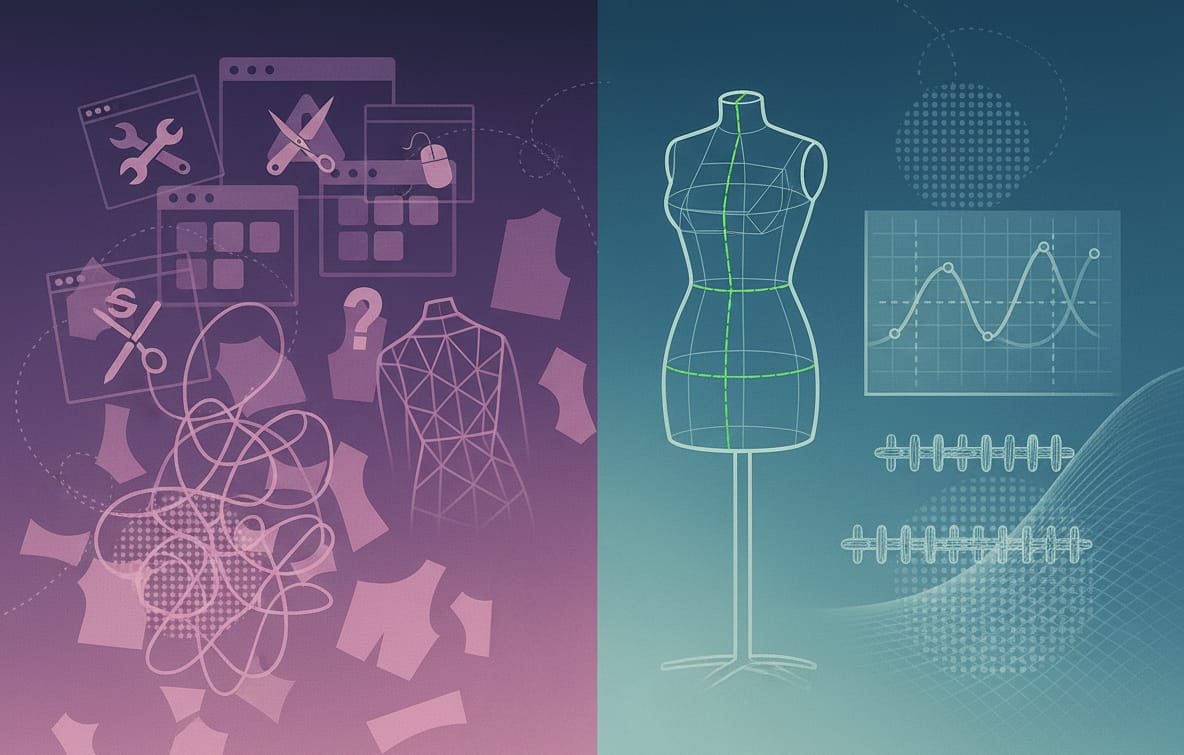At the close of every year, the 3D Retail Coalition (3DRC) brings its three working groups together to share the progress they’ve made in pushing fashion toward true 3D interoperability, accuracy, and digital readiness.
This year’s annual shareout - spanning Technical Fit, Innovation, and Education - emphasised that while ambition is everywhere, real progress still depends on shared direction. And it’s this collective focus that the committees spent 2025 strengthening.
The committees not only aligned on digital-fit expectations and progressed the foundations for universal fabric-physics validation, but also advanced the skills and educational frameworks needed to support the next generation of DPC talent.
Watch the full conversation below!
Don’t have time to watch the full video? Scroll down for a summary of key takeaways and noteworthy quotes.
(A) The Technical Fit Committee
Trust is the biggest thing in digital. We really have to nail down trust. And we're hoping to do so by creating these guidelines.
Phillip Sidberry - Carters Inc.
2025 Achievements
- Published the 3D Fit Index, giving the industry a shared language around digital fit, limitations, and best-practice expectations.
- Completed a full SWOT analysis of the digital-fit ecosystem, highlighting gaps in trust, interoperability, and workflow consistency.
- Distributed the Fit Index publicly via Seamless and LinkedIn, enabling cross-brand adoption and discussion.
2026 Priorities
- Standardise fabric digitisation and embed digital-first workflows in early sampling.
- Strengthen user education and upskilling to improve output quality and build stakeholder trust.
- Deepen vendor collaboration and secure leadership support for consistent digital-fit expectations.
What's Needed Next?
- More voices across brands and vendors to advance avatar alignment, tolerance definitions, and cross-platform consistency.
- Expertise in patternmaking, fit analysis, and vendor management.
(B) Innovation Committee - Digital Fabrics
We’ve established an ASTM subcommittee to help build out standards not only for fabric physics, but for textures as well - and maybe even rendering and lighting. This is the foundation for how AI will generate digital fabric physics in the future.
Michelle Greenhouse - Target
2025 Achievements
- Established a new ASTM subcommittee (D13.67) to build global standards for digital fabrics, textures, and eventually rendering and lighting.
- Launched the 3D Fabric Physics Validation Standard — the industry’s first effort to formalise how digital fabrics are benchmarked against physical behaviour.
- Engaged CLO, Browzwear, Style3D, Assyst and others in collaborative discussions - a major milestone for interoperability.
- Initiated deeper conversations around textures, AI-generated physics, avatar sizing, and the future of digital twins.
2026 Priorities
Two parallel workstreams:
- Digital Fabric Interoperability: AI, digital colour, textures, scanning workflows, and supply-chain digitization.
- ASTM Fabric Validation Standard: Drafting, reviewing, testing, voting, and defining digital tolerances by June 2027.
What's Needed Next?
- Technical writers or anyone experienced in standards development.
- Contributors with garment-construction knowledge so fabric validation can meaningfully connect to garment behaviour.
- Volunteers passionate about digital colour, textures, AI material physics, and supplier digitization.
(C) Education Committee
Our mission is to align education and industry around a common language that defines 3D digital product creation skills and career paths.
Lynn Boorady - Oklahoma State University
2025 Achievements
- Completed and submitted the first Apparel DPC Certification Matrices to the Accreditation Agency for Fashion & Apparel, paving the way for accredited universities.
- Began expanding the framework into footwear, with a call for 2–3 experts to define footwear-specific DPC skills.
- Built the first comprehensive DPC Technology Landscape and Ontology Guide, mapping tools across create/make/sell and their educational support.
- Advanced leadership-focused workstreams to build blueprints, case studies, and change-management guidance for teams adopting 3D.
2026 Priorities
- Officially launch and socialise the Technology Landscape and Ontology via web apps, training sessions, and shareouts.
- Certify the first universities under the new DPC framework.
- Expand skills matrices into footwear and respond to ongoing industry feedback loops.
- Release leadership resources for sustaining ROI and upskilling teams.
What's Needed Next?
- Footwear DPC specialists.
- Educators ready to pilot certified curricula.
- Industry reviewers to keep standards fresh as tools and roles evolve.
Progress happens when the industry works together.
These are not the easy challenges; they’re some of the most complex issues facing our industry. And the only way forward is through collaboration.
Sandra Gagnon, Target
Across digital-fit alignment, universal material standards, and the future of 3D education, none of this work moves forward without shared commitment and new voices.
If you want to help shape the next phase of interoperability, accuracy, and skills development, the committees are actively welcoming contributors across brands, vendors, educators, and solution providers.
The future of 3D will only be as strong as the foundation we build together.
Get involved: https://3drc.pi.tv/register/





